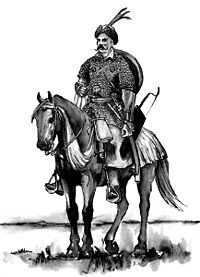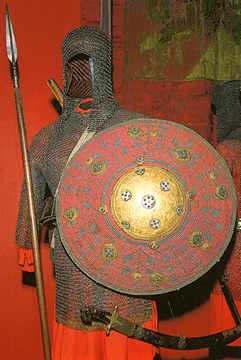Towarzysz pancerny

Towarzysz pancerny ("armoured companion"; plural: towarzysze pancerni, or pancerni ) was a medium-cavalryman in 16th-18th century Poland, named for his chainmail armor ("pancerz"). These units were the second-most-important cavalry arm in the Polish Army, after the Hussars.
Most pancerni were recruited from the middle or lower classes of szlachta (nobility). They were organized into companies (singular: chorągiew pancerna) of 60-200 horsemen.
In the medieval times, during Mieszko I and Bolesław I Chrobry rules, pancerni were members of prince own force, as they only in whole army wore mail armours.
In modern Polish, "pancerni" also means "tank men," as in the title of the book and TV series, Czterej pancerni i pies (Four Tank Men and a Dog). The word "pancerny" is seldom used in that context, however, the common word being "czołgista" (from "czołg," "tank").



See also
- Polish cavalry
- Towarzysz
- Towarzysz husarski
- Poczet
- Pocztowy
- Offices in the Polish-Lithuanian Commonwealth
- Petyhorcy
